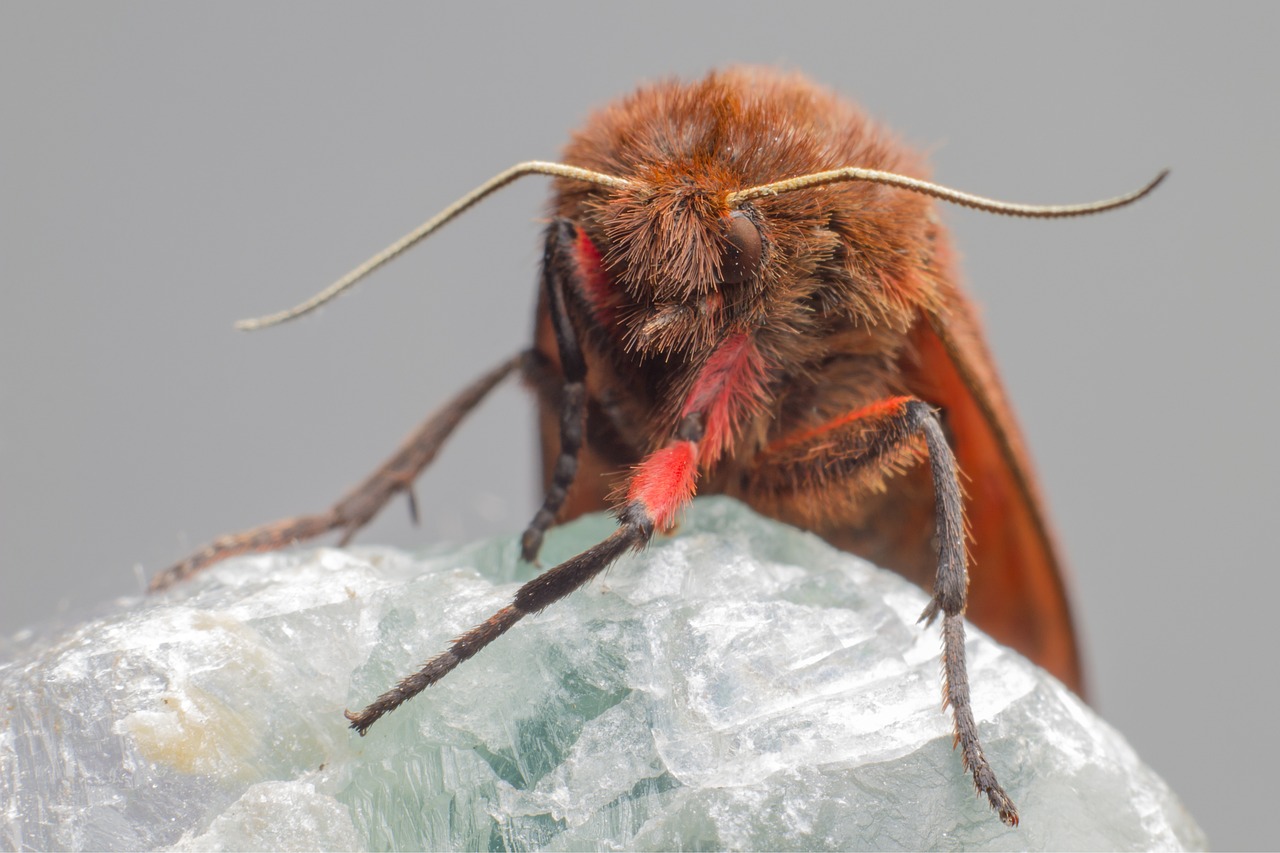The Ruby Tiger Moth (Phragmatobia fuliginosa) is a strikingly beautiful moth that belongs to the family Erebidae. This species is known for its vibrant coloration and interesting life cycle, making it a notable insect in the moth world.
Physical Description
- Wingspan: The Ruby Tiger Moth has a wingspan ranging from 35 to 45 mm (1.4 to 1.8 inches).
- Coloration:
- Forewings: The forewings are typically a reddish-brown to rusty color, with a distinctive black or dark brown pattern of spots and streaks. The pattern can vary somewhat among individuals.
- Hindwings: The hindwings are bright orange or red, which contrasts sharply with the dark forewings. This bright coloration is often visible when the moth is at rest or in flight.
- Body: The body of the Ruby Tiger Moth is furry and generally matches the forewing coloration, ranging from reddish-brown to orange with dark spots.
Distribution and Habitat
- Range: The Ruby Tiger Moth is found across Europe and parts of Asia. It has a relatively wide distribution and can adapt to various environments within its range.
- Habitat Preferences: It inhabits a range of habitats, including woodland clearings, meadows, grasslands, and even urban gardens. It is often found in areas where its larval food plants are abundant.
Behavior and Diet
- Feeding:
- Adults: The adult moths feed on nectar from a variety of flowers. They are primarily nocturnal and are attracted to lights, which makes them relatively easy to observe at night.
- Larvae: The caterpillars of the Ruby Tiger Moth feed on a variety of herbaceous plants and grasses. They are known to consume plants in the families Asteraceae (daisy family) and other broad-leaved plants.
- Activity: The moths are generally active during the warmer months, particularly from late spring to early autumn. They are often seen resting on vegetation or in sheltered spots during the day.
Reproduction and Lifecycle
- Mating: Mating typically occurs in the summer months. After mating, females lay eggs on suitable host plants where the larvae will have access to food.
- Eggs and Larvae: The eggs hatch into larvae (caterpillars), which go through several instar stages before pupating. The larvae are usually greenish with black spots and can be covered in fine hairs.
- Pupation: The larvae form a cocoon in which they pupate. The pupal stage can last for several weeks.
- Adults: After emerging from the pupa, the adult moths continue the lifecycle by seeking mates and laying eggs.
Ecological Role
- Pollination: As nectar feeders, Ruby Tiger Moths contribute to pollination by transferring pollen from one flower to another. This helps in plant reproduction and supports the health of ecosystems.
- Food Source: The moth and its larvae are a food source for various predators, including birds and other insects, playing a role in the food web.
Conservation Status
- Status: The Ruby Tiger Moth is not currently listed as threatened or endangered. It is considered to be of Least Concern due to its wide distribution and adaptability to different habitats. However, like many species, it can be affected by habitat loss and changes in land use.
Summary
The Ruby Tiger Moth (Phragmatobia fuliginosa) is a visually striking moth known for its vibrant orange hindwings and distinctive reddish-brown forewings. Found across Europe and parts of Asia, it inhabits a variety of environments and plays a role in pollination and the food web. Its attractive appearance and ecological contributions make it a noteworthy species in the moth family Erebidae.s prey for various predators in its native habitats.
Visited 102 times, 18 visit(s) today
Views: 189
Subscribe to the newsletter:
